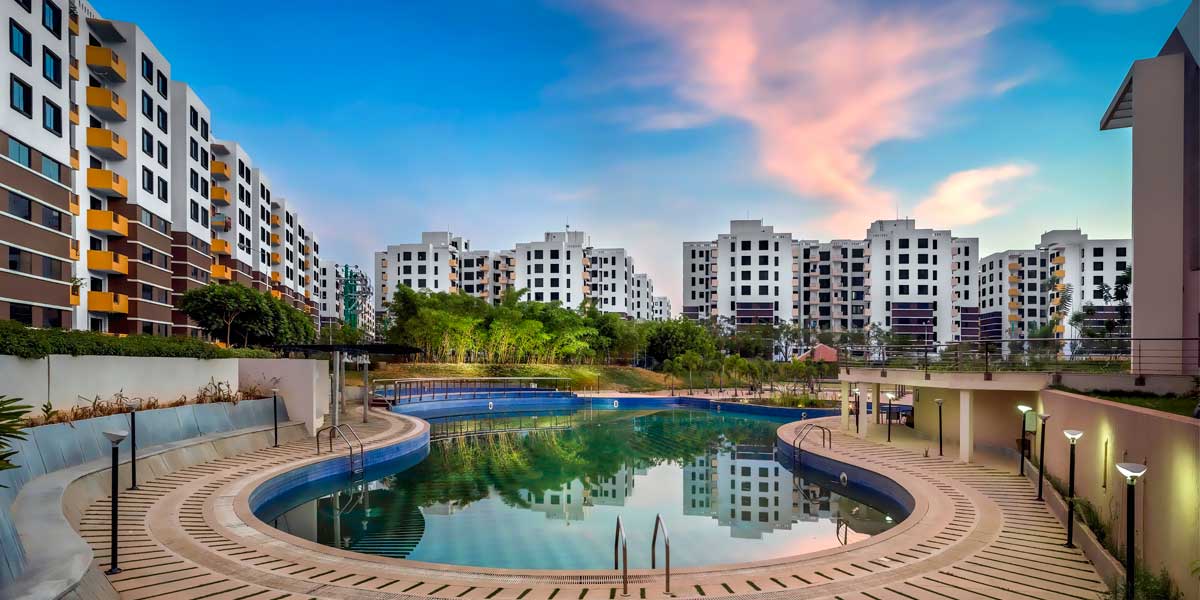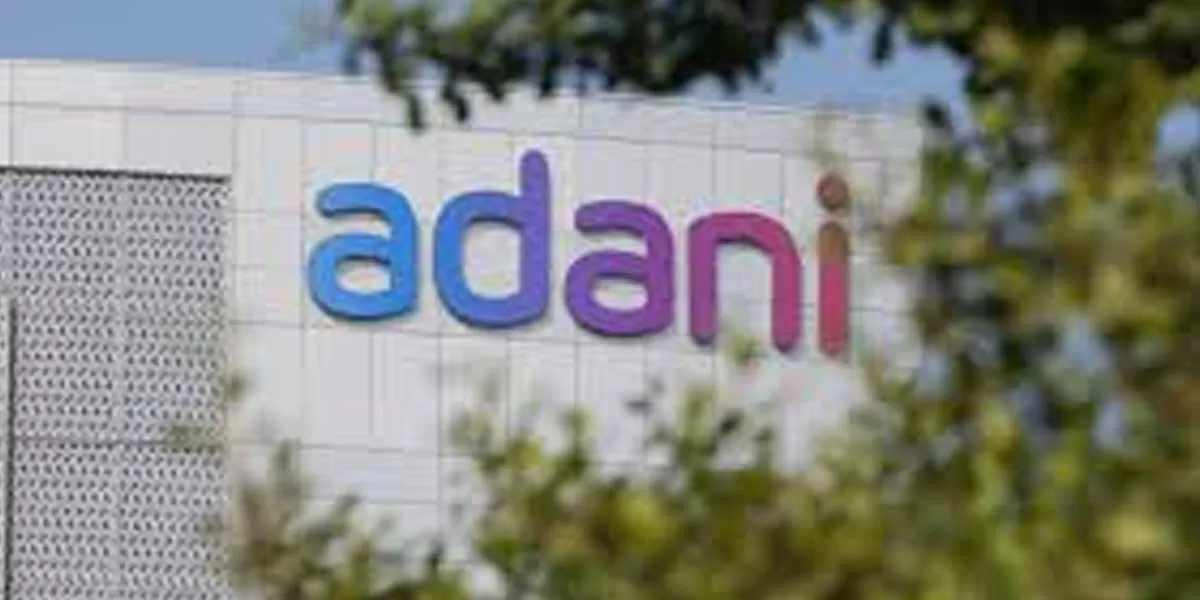Five years after the implementation of the Housing for All by 2022 scheme, the Pradhan Mantri
Awas Yojana (Urban) has made steady progress across states.
As Anuj Puri, Chairman, ANAROCK Property Consultants, tell us, “As in August 2020, a total
of 1.06 crore homes had already been sanctioned in the country, of which 33 per cent or about 35.18
lakh homes have been completed while another 66.23 lakh units have been grounded for
construction.”
A sharp 180 per cent rise in project completions was seen between December 2018 and early August
2020, from 12.58 lakh homes completed in December 2018 to over 35.18 lakh homes in August
2020. “Of the total homes sanctioned, Andhra Pradesh has the highest number (20.16 lakh homes),
followed by Uttar Pradesh with over 15.95 lakh homes and Maharashtra with over 12.34 lakh
homes,” says Puri. In terms of completion, he says Uttar Pradesh tops the list with more than 5.34
lakh homes already completed, followed by Gujarat with 4.22 lakh homes and Maharashtra with 3.44
lakh homes.
Impact 2020!
Like other industries, the Indian real-estate sector was also impacted by the COVID-19 crisis.v
Initially, the real-estate purchase cycle hit a near ‘pause’ button across several markets and segments.
“Beginning with initial phases of ‘unlocking’, we have seen a steady revival in demand,” says Amit
Pal, Chief Projects Officer, Mahindra Happinest. “At Mahindra Lifespace Developers (MLDL),
we have witnessed demand from salaried employees, with many customers looking to upgrade to
larger apartments.” Mahindra Happinest—MLDL’s affordable housing brand—has performed well
despite the pandemic, with limited inventory left. For instance, over 1,000 units were sold at
Mahindra Happinest project in Kalyan within nine months of its launch, of which four months were
in lockdown. Similarly, notwithstanding the lockdown, the company sold more than 300 homes
entirely digitally within only three weeks of launch at Happinest Palghar in the Mumbai
Metropolitan Region (MMR). “The pandemic has accelerated the adoption of technology, be it in
construction or sales. We are on track with our plans for project launches and land acquisitions in the
fiscal,” adds Pal.
“Construction activity was halted during lockdown,” says Rishi Jain, Managing Director, Jain
Group. “Post lockdown, the cost of steel and cement increased and the availability of construction
labour went down. This has not only increased the cost of construction for developers but caused
delays in project completions.” After the lockdown, Jain Group started seeing positive outcomes
with its several lucrative offerings.
“Availability of affordable housing is critical to the real-estate sector’s reinvigoration,” says Rakesh
Reddy, Director, Aparna Constructions & Estates. “With its infrastructure status and the
Government’s support, this is the most incentivised segment. Attracted by growing job opportunities
in Hyderabad, demand for affordable housing has increased.”
For Abhishek Kapoor, COO - Residential, Puravankara, “The pandemic gave us ample time to
brainstorm and identify key aspects of our practices and designs that would need new interventions.
Once the restrictions were eased, we immediately resumed construction in compliance with all the
operating procedures put in place.” Despite the hurdles brought upon by the pandemic,
Puravankara’s projects are running on schedule as per the revised RERA deadlines.
Reducing time and cost of construction
Affordable projects are disproportionately impacted by timeline delays or rise in construction costs.
The use of innovative construction technology and building materials and ready-to-fit techniques can
enhance quality, improve speed and reduce waste.
The construction area and saleable area ratio is an important aspect to define affordability of a
project. The floor plate has to be big enough to ensure utilisation of the available FSI with minimum
construction area, says Architect Gaurav Sanghavi, Co-Founder, Pentaspace Design Studio.
“Standardisation of building typologies and modularity in terms of details help reduce cost. An in-
house RMC plant and quality check can also control cost. Fly-ash bricks can be used for block work,
adding to the green component of the project.”
According to Jain, “The basis of sustainable construction should be ‘concrete’ using a lower amount
of cement, more recycled materials, more supplementary cementitious materials, and new-generation
ingredients to reduce water ingress and deterioration in concrete.” This will ensure sustainable and
economical construction by reducing associated repair, maintenance materials and costs. To ensure
an eco-friendly environment, Jain Group has introduced ‘Miyawaki’ in its projects, which is a new-
generation, cost-effective method.
Mahindra Happinest has adopted a hybrid approach. “We use aluminium formwork and cellular
lightweight block for construction of core structures,” says Pal. Cellular lightweight concrete (CLC)
is an alternative to conventional bricks and concrete blocks, and facilitates easier handling and
transportation. It has a density ranging between 600 kg and 700 kg per cu m and floats on water.
“These blocks are easier to lay and thus enable faster construction, in addition to their thermal
insulation properties,” he adds. “We also use portable modular or ready-to-fix components for
standardisation and faster construction.” Additionally, the company’s projects are designed to reduce
environmental impact and benefit end-user health. The focus is on reducing consumption of non-
renewable resources; minimising waste; and developing healthy, productive environments. Also,
designs optimise available natural daylight and wind and support the use of locally available
materials.
As Aparna Constructions establishes itself in the affordable housing segment, Mivan technology will
be put to its strongest test. “The state-of-the-art aluminium wall formwork offers higher efficiency,
close to zero wastage, and a massive reduction in the skilled resources required for constructing the
shell and core of the building,” says Reddy.v
Kapoor believes the pandemic has catalysed the adoption of technologies and there is now wider
acceptance and reliance on them. “At Provident Housing, the affordable arm of Puravankara, we
have constantly strived to revolutionise our construction practices, even before the outbreak,” he
shares. “We have adopted precast technology, an industrialised method of construction, which helps
reduce dependency on labour requirements and increases efficiency to meet the mass demand for
housing across India, while ensuring high quality in construction.” The company’s project Provident
Sunworth was completed in 18 months using this technology. In addition, he believes several other
tasks will see digitisation and automation. In land mapping, for example, technology has made it
possible to survey land using drones. “We will continue to witness newer technologies such as 3-D
printing, which are at their nascent stages, yet have the potential to disrupt old construction
practices.”
Ensuring affordable execution
In the planning, design and construction of affordable housing projects, how can companies ensure
affordable execution?
Aparna Constructions has implemented backward integration. This entails vertical integration
wherein the company has set up its own building material facilities to ensure a more reliable or cost-
effective supply of inputs. Reddy says, “This strategy insulates the company from market cycles. It
allows for more efficiency and control of the development ecosystem, and thus shields customers
from elevated costs.” Backward integration also ensures that projects are built to enhance the
environment, not disturb it. The company conserves natural resources by optimising energy-
efficiency, generating less waste and providing healthier spaces for residents. With this strategy,
Aparna Constructions has established itself in industries including manufacturing of uPVC windows,
sanitaryware, ready-mix concrete, brick making and tiles, with a greenfield manufacturing unit.
For its part, Mahindra Happinest has adopted a manufacturing approach that involves converting the
land (which is a raw material) into a finished product and selling it as soon as possible. The company
has deployed digital, AI-powered project lifecycle management (PLM) solutions to streamline key
stages in its construction project lifecycle, including budget management, planning, progress
monitoring, quality control, safety and handovers. “This helps us ensure safety, environmental
compliances and commercial discipline during the construction process, all of which add up to
improved project execution efficiency,” avers Pal. Also, by ensuring locally sourced construction
materials, the company not only delivers projects faster and at lower costs, but also significantly
reduces the environmental impact of construction activities.
Expediting the process
Developers are becoming increasingly inclined towards building affordable housing projects.
“The recent announcement of an additional outlay of Rs 18,000 crore for the urban housing scheme
will boost builder confidence and several projects will be able to resume and reach completion,”
Kapoor points out. “Moreover, with home loans at their decadal lowest and other incentives such as
the reduction on the stamp duty in several states, the segment will witness demand. Real-estate
companies are also giving additional benefits through discounts and ease of access to homebuyers
through their digital footprint.”
However, Reddy says, “The Government must streamline tax rates and minimise administrative
barriers. This will ensure surplus funds in the hands of potential homebuyers, which will bolster
consumer confidence and increase demand. The real-estate sector will benefit from revised income
tax slabs that reduce overall tax expenditure. This will enhance the ability of the salaried class to
invest in affordable housing. Expanding the availability of income-tax deductions for homebuyers
can incentivise new buyers.” He further adds that lowering the GST for affordable housing projects
can bring them within the reach of a wider audience. “The Government should also relook at
rationalising the GST rates levied on construction materials. This will bring down the burden of
construction cost and have a positive impact on overall pricing.”
Sanghavi adds, “Providing cheaper land banks for affordable homes and income-tax benefits for
developers opting for affordable schemes are key factors that need to be reviewed to achieve the
goal.”
For his part, Pal recommends, “A fast-tracked approval process for affordable projects; interest
subsidies on FSI charges; further rationalisation of stamp duties and registration charges; and rebates
on construction materials can add further impetus to growth in the segment.”
Affordable update!
The construction timeframe of an affordable housing project depends on its scale.
“For optimal profitability and viability, any phase of development should be completed from
planning to execution in 24-30 months,” says Architect Gaurav Sanghavi, Co-Founder,
Pentaspace Design Studio. “A detailed market survey to understand the customer profile and
requirement should be captured in the design brief on Day 1. If the data is netted correctly, project
delays owing to design intervention at a later date can be avoided.”
Till date, Puravankara has launched over 20 million sq ft of affordable housing projects, of which
close to 10 million sq ft have been completed and delivered to over 26,000 happy and satisfied
homeowners. “The average selling price stands at about Rs 4,000 per sq ft,” says Abhishek Kapoor,
COO - Residential, Puravankara.
Mahindra Happinest has four ongoing projects in India, with three in MMR (Happinest Kalyan,
Happinest Palghar and Happinest Boisar), and one in Chennai (Happinest Avadi). “Mahindra
Happinest homes are priced between approximately Rs 3,500 and Rs 6,500 per sq ft,” says Amit Pal,
Chief Projects Officer, Mahindra Happinest.
And Rishi Jain, Managing Director, Jain Group, updates, “The company has delivered 17
affordable housing projects totalling 3.5 million sq ft at an average selling price of Rs 2,500 per sq
ft.”
Architect’s take!
Architect Gaurav Sanghavi, Co-Founder, Pentaspace Design Studio, elaborates upon how an
architect can contribute to making an affordable housing project truly affordable:
Right from the planning stage, one needs to incorporate elevation features and finishing
material and identify the areas to be highlighted.Efficient structural girds should be worked on keeping in mind parking on the ground floor.
The structure should be kept as lean as possible to avoid floating of columns to minimise cost
of construction.For natural ventilation, create a design to incorporate ample light and free-flowing breeze.
Simply maximising windows in habitable spaces while leaving the non-habitable spaces
towards the inside can create a huge impact. To maximise external light and ventilation in all
the habitable rooms, non-habitable spaces such as toilets should be taken on the inside with
internal ducts. A well-designed open lobby area can allow the building to breathe.Slight change in designing the facade can help change the complete look of the building.
Recessed windows help maximise shade on the opening, bringing in light but cutting off heat.
Affordability means efficient use of resource optimisation of aperture sizes by maintaining
the window and wall ratio to 50:50. As the sill heights of the windows are increased, the cost
of the aluminium, glass and the railings reduces.Cutting cost in areas that do not require spending, like using kota in the stairwell from the
first floor as well as the lift lobbies of the upper floor, gives an opportunity to reduce cost and
increase the spend in areas like the ground floor lobby. Instead of using MS railing on the
staircase, RCC pardi can be cast to further reduce cost.As these projects do not have ground space, we give amenities across the building and on the
terrace. We can create activity spaces around the staircase well and landing like a wall
library, art wall, chalkboard on the wall and puzzle wall for the children to use and have
community sit-out spaces, a gazebo and jogging or walking track on the terrace. - SHRIYAL SETHUMADHAVAN


















